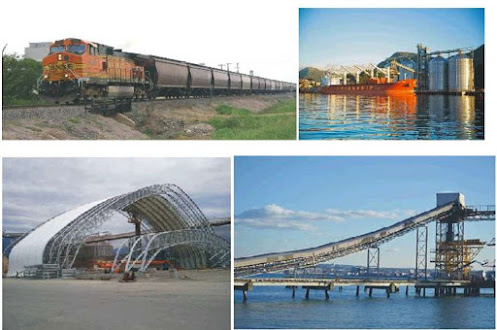The world production of wood pellets in 2013 amounted to 22
million tons, and by 2024 is projected to be at 50 million tones. The European
market for the year is projected to more than 30 million tons and the Asian
market is projected to more than 15 million tons. Judging from the global
energy mix, fossil fuels still holds the largest share of about 80% in the next
15-20 years, as well as in the national energy mix Indonesia based on PresidentialDecree No. 5 of 2006 on National Energy Policy. Although it is not holding the
largest share of renewable energy, particularly biomass showed a significant
increase over time. Factors such as the environmental crisis and the energy
crisis had been the main thrust of the increase in renewable energy,
particularly biomass, which is slowly making history repeat itself.
To be a leader or major player in the wood pellet Asian
regional level to the global world, it is not impossible for Indonesia. The grace
of Allah SWT be on average 11 hours per day of sun in Indonesia makes plants
able to photosynthesize optimally, soil fertility due to weathering of rocks of
many volcanoes, and the extent of territory that stretches from Sabang to
Merauke is undoubtedly a major force potential. Under these conditions an
energy plantation from calliandra can harvest very quickly over a period of
less than one year, then can continue to harvest each year from coppice
generated.
Sweden since the 1970s have used the energy planatation to
supply biomass in large quantities consistently. The era of the 1970s was an
era of energy crisis due to OAPEC embargo in the Yom Kippur war, so as
countries of the Arab oil producers would not export its oil. This resulted in
skyrocketing world oil prices, so that western countries should innovate to
meet its energy needs, including the use of biomass massively. A number of
countries in Europe followed to make energy plantations and included in other
places such as the US, New Zealand and Canada. The rapid rotation strees namely
poplar and willow cultivated in energy plantations and harvest on average every
four years, or four times longer than Indonesia because the climate is
sub-tropical. This is what we in Indonesia with the climatic conditions of the
above need to be thankful to Allah SWT.
When the world is still largely rely on wood wastes as raw
material for wood pellets, with climatic conditions in Indonesia as described
above, the energy plantation will be effective and sustainable. And when eg
Indonesia will target a major player wood pellets in the world with 50% of
world production in 2024 (25 million tonnes / year) means it takes land
approximately only 170 thousand ha, it is still much smaller than the land used
for oil palm plantations today , which is about 11 million ha. The quality of
land needed also unnecessary as well as oil palm plantations, even sloping land
or in the form of the slope will be very good for calliandra tree. This is
because calliandra very anti to waterlogging. If the plant capacity of wood
pellets made of 100,000 tons / year (20 tons / hour) means it takes 250 units
wood pellet plant or if the capacity of the plant made 50,000 tons / year (10
tons / hour) means it takes 500 units of wood pellet factory and so on.
Another advantage is calliandra able to control the growth
of weeds like kirinyuh. Profits will be optimized by integrating with breeding
goats or cows, so the import of meat can also be reduced. The leaves of the
plant calliandra for the animal feed, while dung as fertilizer for calliandra
plantation. If the number of animals very much so the biogas plant may be made
and as a source of additional energy in the wood pellet mill.
Once paddle the two birds so the saying goes. The
destruction of tropical forests in various regions turned out to be continued
without can be controlled. Allegedly every second there is deforestation of
tropical area of a football field, so that every year take place opening of
tropical forests around 150,000 square kilometers (15 million ha). Disaster due
to human greed in the form of floods, landslides, expansion of the desert and
so as a result of forest destruction above. Rehabilitation well as land
reclamation is needed for the improvement of environmental conditions so that a
disaster could have been avoided, as well as the production of wood pellets as
a source of renewable energy from biomass are the most widely produced today. With
the improvement of soil fertility using the calliandra plants then in less than
5 years, which was originally barren land can be used for various agricultural
activities. In an average period of 10 years, the springs are also very likely
to occur in forested areas and the arrangement of these ecosystems. When the
springs appeared the agriculture and forestry sectors could be growing,
including the processing industry.
Certainly not the mild efforts to achieve this goal. Institutional
arrangement, planting understanding of the sustainability of plantation /
forest to the actors of business and government, expertise in the form of skill
to the production and provision of adequate infrastructure is a challenge that
must be overcome to achieve the above targets. The target will be achieved if
all parties can be synchronized to achieve that goal. Again not too late, just
a willingness to begin.


















No comments:
Post a Comment